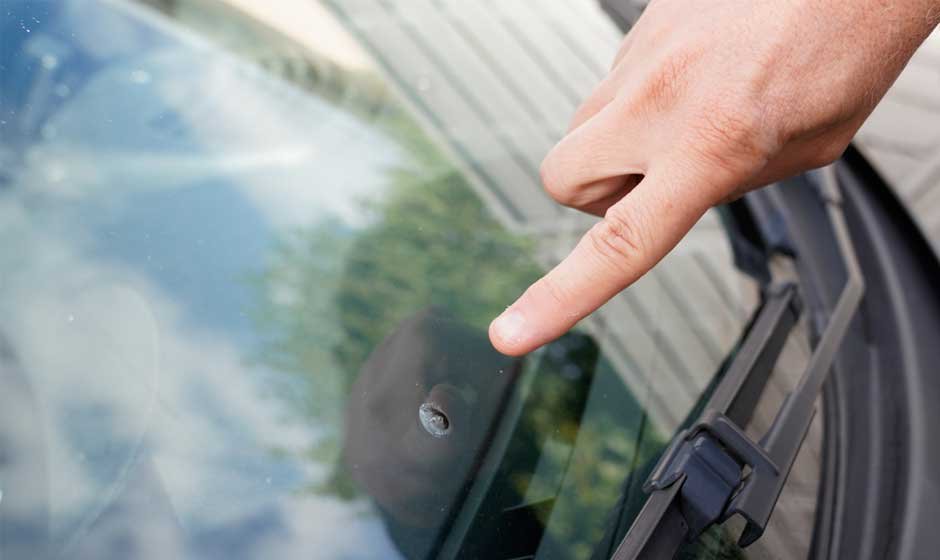Many cracked windshields amount to little more than bad luck. If you’re driving along a highway and the truck in front of you kicks up a stone or piece of gravel that hits your windshield and cracks it, what can you do? Apart from addressing the issue as quickly as possible, all you can really do is say, “Darn it,” and keep driving. Or maybe you’d pick a different phrase.
While misfortune can always rear its ugly head, you’re not completely helpless when it comes to your windshield. Windshield maintenance can help you avoid cracks and chips and protect your investment in your vehicle, potentially lowering your auto repair costs. Here’s what you should know about windshield maintenance and windshield repair.
Windshield maintenance
When we think of how we take care of our vehicles, we may not think of windshield maintenance. Other maintenance tasks seem more obvious: check your engine oil, check your tire pressure, rotate your tires periodically, have your brakes inspected, etc. The windshield is a basic piece of technology: It’s glass. Unless you have a “smart windshield” or advanced driver assistance systems (ADAS) that involve sensors embedded in the windshield. So, what can you really do to help your windshield?
Windshield maintenance tips
Here are some best practices you can follow to take care of your windshield and reduce the odds of needing to pay for costly auto body repair to fix it:
Top up your windshield washer fluid
This is perhaps the most practiced windshield maintenance tip. Washer fluid is key for cleaning windshields and wiping away debris as we’re driving. It’s also helpful for clearing away ice in winter.
Windshield washer fluid isn’t like other fluids in that we can’t anticipate how much of it we’ll use. If everything is working properly, our vehicles typically go through motor oil, automatic transmission fluid, and brake fluid at a steady pace.
With washer fluid, you never know when you might drive through a dust storm or behind a big truck that kicks up dirt, requiring a lot of fluid to clear off. It’s good windshield maintenance to keep a relatively full bottle of washer fluid in your vehicle, so you can top it up whenever necessary. Otherwise, you might have low visibility, crash, and then need to pay for an expensive collision repair. It’s just a wise investment to get a second bottle of washer fluid next time you buy some.
Clean and check your wipers regularly
You can have the best washer fluid in the world, but if your wipers don’t work, you’re not going to see very well out of your windshield. Regular wiper inspections are integral to windshield maintenance. A good quality wiper should keep firm and even contact with the windshield, cleaning away dust and dirt and wiping away rain and snow.
While you’re checking your wipers, clean them. If you never clean your wipers, they’ll just be spreading dirt around your windshield, and that’s no good. If you’re not sure about the condition of your wipers, you can get them checked by an auto body repair technician or just replace them yourself. It might not be a fully necessary expense, but it’ll cost less than a collision repair resulting from poor visibility.
Clean your windshield
Once a month, or whenever it’s dirty, it’s wise to give your windshield a full clean. While you’re at it, clean your side windows, rear windows, and mirrors. But it’s important to clean your automotive glass the right way.
First, use a microfiber cloth. A different kind of towel or rag might scratch your windshield, whereas a microfiber cloth should be fine. Use a circular motion when cleaning to minimize streaks. Last, avoid household cleaners that contain ammonia which can damage glass and tint.
Handle snow and ice the right way
Ice and snow can really damage windshields. Invest in a high-quality ice scraper with a plastic edge, as metal can easily scratch. It’s also wise to turn your vehicle on and let the defroster run for a bit before scraping, as this can make the task easier. And, if you park outside when heavy snow is in the forecast, lift your wiper blades to prevent them from freezing to the windshield.
Manage extreme temperatures
Rapid changes in temperature can damage glass. Wise windshield maintenance involves not turning the defroster all the way up in frigid temperatures. Similarly, never pour hot water on your windshield to melt ice. The temperature differential can easily crack the glass, so using a proper deicing solution is much safer.
In summer, park in the shade whenever possible. If you must leave your car parked in the hot summer sun for an extended period, crack the windows a little to avoid too much heat building up inside.
Address cracks and chips immediately
Small cracks in your windshield can grow. Fast.
What’s a tiny crack on Friday can grow into a spiderweb on Monday that hinders your sight and compromises the structural integrity of your windshield. Similarly, a chip, even a small one, can weaken your windshield. One chip can mean the next stone to hit your automotive glass shatters it. Delaying windshield repair is dangerous and could lead to more expensive collision repair down the line.
Trust your windshield maintenance and repair to experts
Windshield experts can fix your crack or chip fast. After a windshield repair, it’s wise to drive cautiously for a few days, especially if you’ve had a full windshield replacement. Extra jostles and bumps could upset the windshield as it sets in.
If you have an ADAS that projects information on your windshield, it’s important to go to an auto body repair shop that has the tools and skills to calibrate the sensors properly. It’s always smart to trust the experts when it comes to collision repair and windshield repair.










